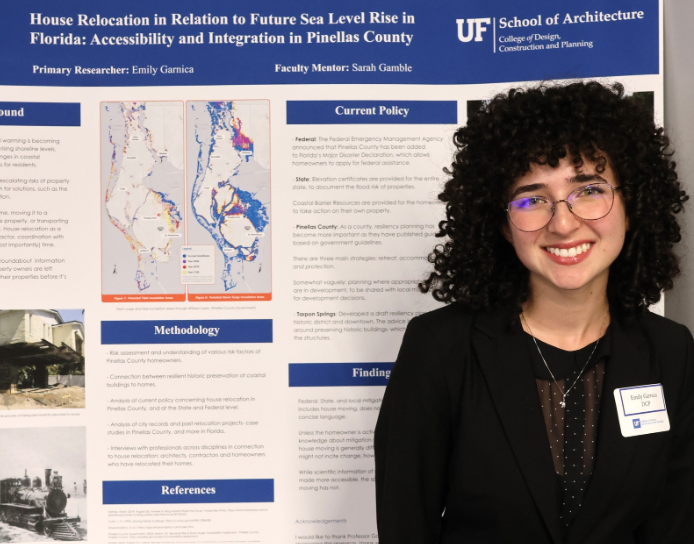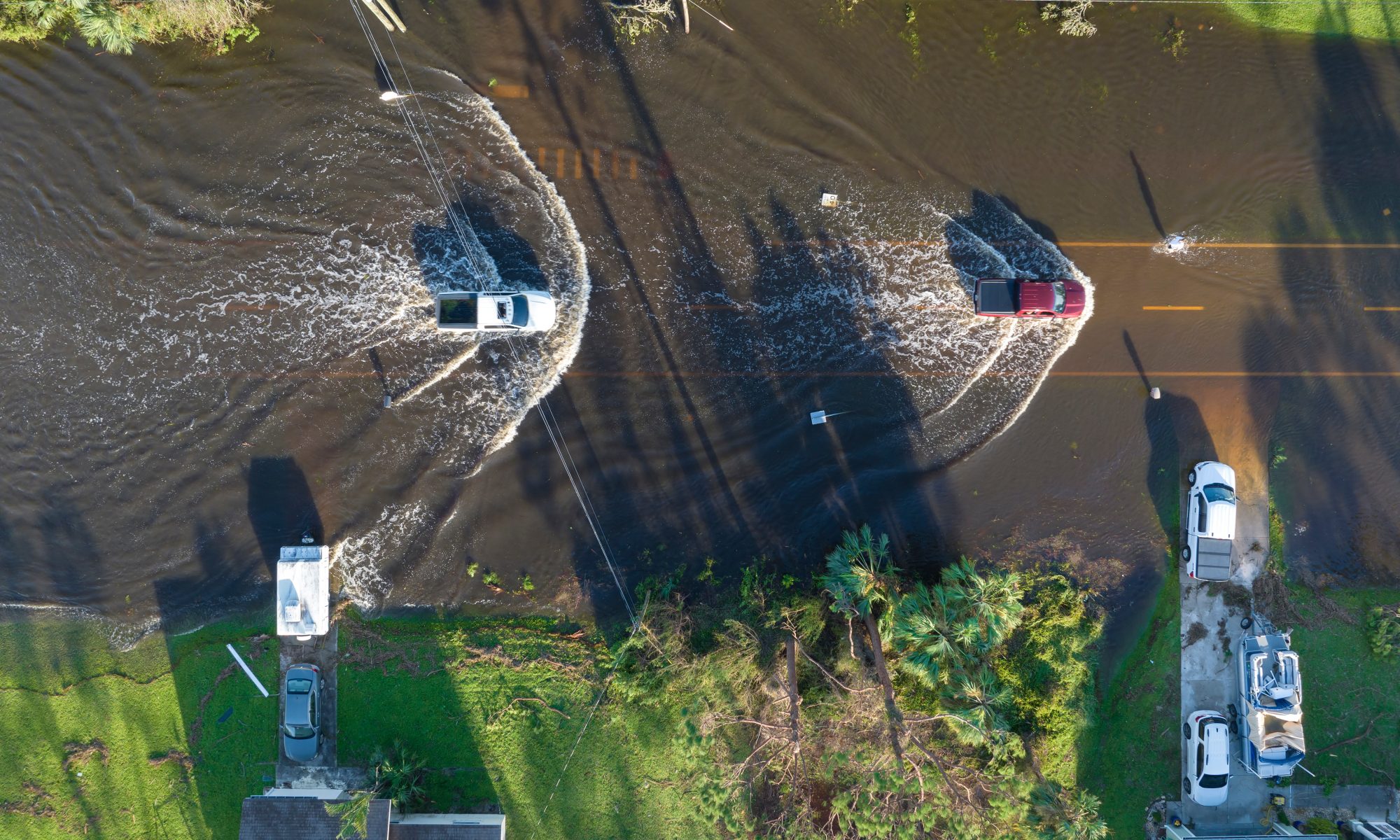 Student: Emily Garnica
Student: Emily Garnica
Faculty Mentor: Sarah Gamble
Affiliation: UF School of Architecture
Gulf Stream: Resilient Built Environments & Economies
Project Overview
In the face of sea-level rise and increasing flood risks across Florida’s Gulf Coast, communities are in urgent need of practical, accessible strategies for long-term resilience. House relocation, which involves moving or elevating existing residential structures, is one such strategy, but until now, no consolidated public guide has existed for homeowners in Florida.
Emily Garnica developed a comprehensive relocation guide tailored to the needs of Pinellas County, Florida. Adapted from a similar guide by her mentor, Sarah Gamble, for the City of Austin, this Florida-specific version draws on extensive research into federal, state, and local regulations, best practices, case studies, and funding opportunities.
Why It Matters
Pinellas County is home to thousands of coastal properties, yet educational resources on house relocation are limited and fragmented. While government entities list relocation as a hazard mitigation option, public-facing guidance is often too technical or buried in dense documents.
Emily’s research shows that relocation can be more feasible and cost-effective than many assume, especially when supported by federal or state grant programs.
Key Findings & Contributions
- Emily synthesized local, state, and national data to develop a house relocation guide for coastal homeowners in Pinellas County.
- Her research highlights house relocation as a viable tool for flood risk mitigation, particularly for homes on pier-and-beam foundations, and addresses cost misconceptions by identifying funding pathways.
- The guide offers clear steps, permitting guidance, and technical considerations specific to Pinellas County’s building codes, elevation standards, and flood disclosure policies.
- The project considers social vulnerability by proposing how information can be made more accessible to homeowners who may face language or resource barriers.
Related Work in Gulf Communities
In addition to her relocation guide, Emily contributed to a design-build project in Cedar Key, Florida. As part of a class led by architecture professor Charlie Hailey, Emily and her classmates designed and constructed a yoga platform at Cemetery Point Park. Inspired by the form of a boat and the tranquility of water, the platform includes curved benches, a raised instructor space, and blue-and-white sun canopies that Emily helped sew by hand.
Read more about the project in Cedar Key News →
Skills Gained
- Architectural research and public-interest design
- Policy and regulatory analysis for hazard mitigation
- Community engagement and science communication
- Climate adaptation planning for vulnerable regions
